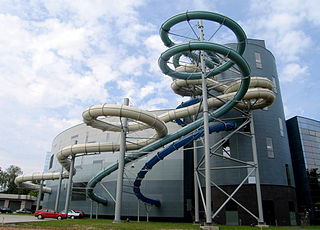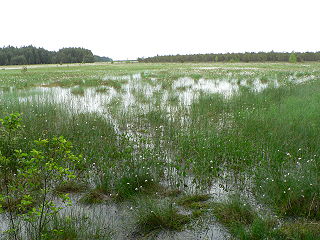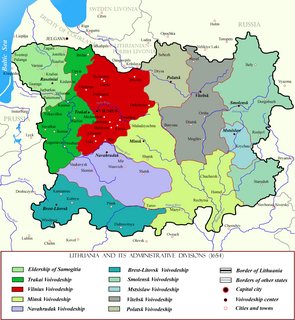| Česukai | |
|---|---|
| Village | |
 | |
| Coordinates: 54°09′01″N24°11′20″E / 54.15028°N 24.18889°E Coordinates: 54°09′01″N24°11′20″E / 54.15028°N 24.18889°E | |
| Country | |
| County | Alytus County |
| Municipality | Varėna district municipality |
| Eldership | Merkinė eldership |
| Population (2001) | |
| • Total | 5 |
| Time zone | EET (UTC+2) |
| • Summer (DST) | EEST (UTC+3) |
Česukai is a village in Varėna district municipality, in Alytus County, southeastern Lithuania. According to the 2001 census, the village has a population of 5 people. [1] The village is located 1 km south to Merkinė, between Nemunas and Merkys rivers, at Dzūkija National Park. Česukai is surrounded by a pine forest and it is only reachable by a forest road which branches from Vilnius-Hrodno highway.

Alytus County is one of ten counties in Lithuania. It is the southernmost county, and its capital is the city of Alytus. Its territory lies within the ethnographic region of Dzūkija. On 1 July 2010, the county administration was abolished, and since that date, Alytus County remains as the territorial and statistical unit.

Lithuania, officially the Republic of Lithuania, is a country in the Baltic region of Europe. Since its independence, Lithuania is considered to be one of the Baltic states. It is situated along the southeastern shore of the Baltic Sea, to the east of Sweden and Denmark. It is bordered by Latvia to the north, Belarus to the east and south, Poland to the south, and Kaliningrad Oblast to the southwest. Lithuania has an estimated population of 2.7 million people as of 2019, and its capital and largest city is Vilnius. Other major cities are Kaunas and Klaipėda. Lithuanians are Baltic people. The official language, Lithuanian, along with Latvian, is one of only two living languages in the Baltic branch of the Indo-European language family.

Merkinė is a town in the Dzūkija National Park in Lithuania, located at the confluence of the Merkys and Nemunas rivers. The town is the location of The Mount of Queen Bona, a mound which was the site of an ancient hill-fort overlooking the rivers.There is a pyramid in the nearby village Česukai.

Česukai is famous by its bioenergetic pyramid build by a local resident Povilas Žėkas. It is on the site of where he had a mystical experience as a child of seven on 20 August 1990. [2] It attracts a broad range of people such as Laima Paksienė, wife of Rolandas Paksas, who goes there every two weeks sometimes with her whole family. [3] She participated in a campaign to save the pyramid from demolition when this was proposed by Lithuanian officials. [4] Many people visit this place believing that this pyramid has healing powers.

Rolandas Paksas is a Lithuanian politician who was President of Lithuania from 2003 to 2004. He was previously Prime Minister of Lithuania in 1999 and again from 2000 to 2001, and he also served as Mayor of Vilnius from 1997 to 1999 and again from 2000 to 2001. He has led Order and Justice from 2004 to 2016 and has been a Member of the European Parliament since 2009.













